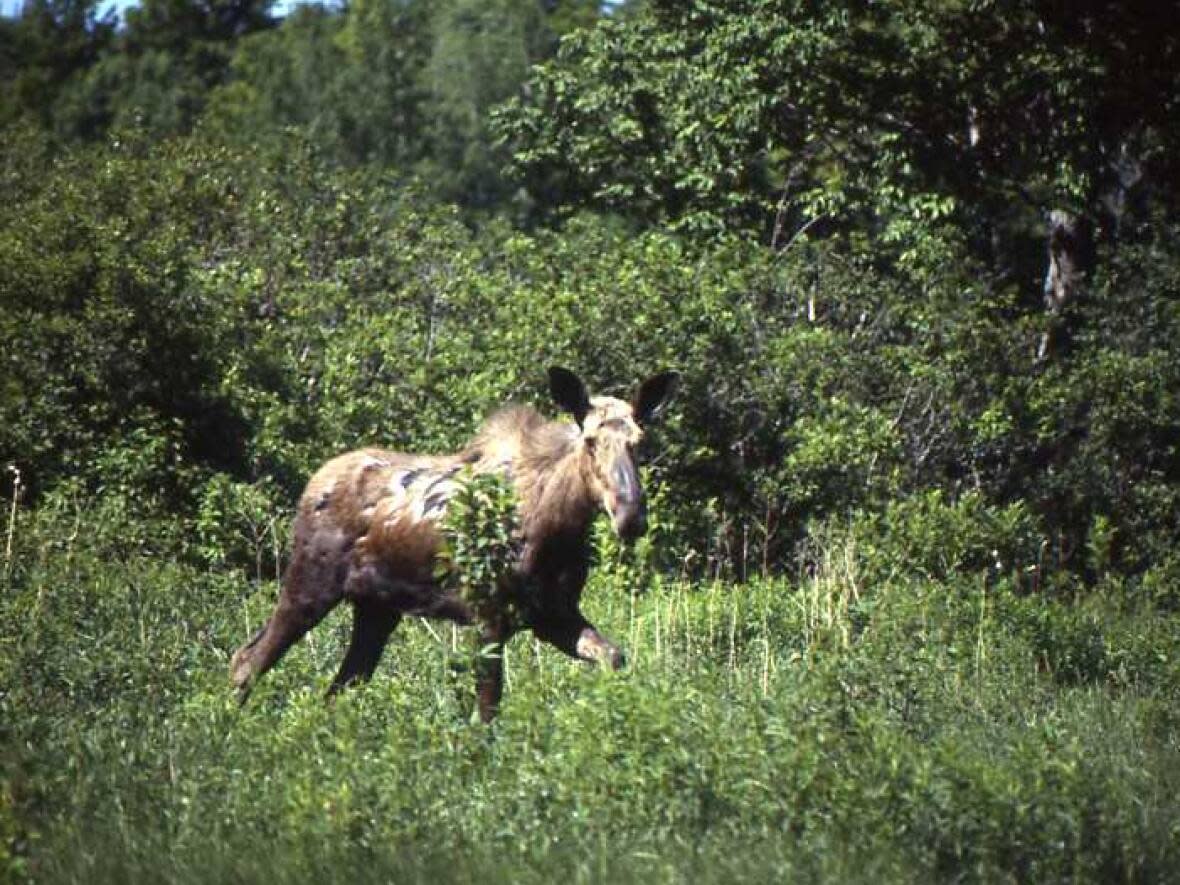N.S. government releases mainland moose recovery plan at 'critical juncture'

The Nova Scotia government has released the long-delayed recovery plan for the mainland moose and while it will take time, the minister responsible says he believes it can be done.
Released Thursday, the plan follows years of starts and stops as previous governments were taken to task by the auditor general and taken to court by members of the public for those delays.
Natural Resources and Renewables Minister Tory Rushton said in an interview Friday that work would begin right away.
"Not just do I think it's achievable, it's something that we need to do," he said.
'A critical juncture'
The report makes clear, however, just how much work there is to do and how long it will take.
"The recovery team is of the opinion that mainland moose are at a critical juncture of species recovery, and that most of the actions identified in the recovery plan should be considered a high priority."
The aim is to reach a population of at least 5,000 moose, 500 of which would be breeding animals, and create better connectivity between the groups of moose in the Cumberland/Colchester area, Pictou/Antigonish/Guysborough area and around the Tobeatic protected wilderness.
One of the key challenges in these efforts is the lack of natural habitat, according to the report.
"Modelling suggests there is insufficient suitable habitat available over the next 30 years to support the populations necessary to achieve recovery objectives for the two eastern mainland localized groups. Therefore, the focus of management in these regions is twofold: to maintain existing identified high-quality habitat as well as enhancing habitat suitability in the remainder of the core habitat with the goal of improving future habitat suitability."
Addressing forestry practice issues
Along with more habitat and breeding animals, the recovery plan also calls for efforts to mitigate or avoid primary threats to the species. This includes making it easier for moose to travel freely near roads and highways and confronting forestry practices that could jeopardize habitat.
To that end, the report calls for the government to ensure mainland moose habitat and buffer zones are accommodated as part of the implementation of Lahey forest practice review recommendations.
Rushton said that work is happening and will continue to happen.
"We have to move to that ecological model that we've been talking about for so many years now and we're taking steps to do that," he said.
"Same as we're going to be taking further steps for this mainland moose recovery plan."
Population survey to continue this winter
Mark McGarrigle, a species-at-risk biologist with the province, said the plan validates what people working on the issue have observed for some time. The key is what happens with the plan, he said.
"It's only good provided you can actually implement the actions."
McGarrigle said it would be a "long-term process" to turn the tide, starting with getting an accurate population count to establish a baseline to measure progress against.
Aerial surveys began in the summer and more are scheduled for this winter. The difficulty getting accurate data is a challenge with all species at risk, said McGarrigle.
"It's a question of resources in terms of money to spend on projects and people, because you need to have qualified researchers to be able to do some of this work and the time to be able to do it."
MORE TOP STORIES


